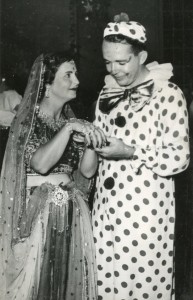Books »
Inclusions included
May 30, 2014 | Comments Off on Inclusions included | Betsy Woodman
The title of my book Emeralds Included contains a play on words. An “inclusion” in a gemstone is a flaw, and emeralds are particularly likely to have them. I guess I was saying that the inclusions of life are always included, even in the most valuable things. (You may be comforted to know that even my editor had to have this explained.) Hey, a jeweler I was talking to really liked the pun.
There’s a jeweler in the book called Mr. Shah; I picture him as a combination of shrewd businessman, knowledgeable gemologist, and artist.
For background material about the stones, I consulted Fred Ward and Charlotte Ward’s brilliantly illustrated book, Emeralds.
In the 1500s, the Wards tells us, the people in Colombia used emeralds in jewelry. Then came the Spanish conquistadors, who apparently didn’t care for green gems but were willing to trade them for gold, diamonds, and pearls, and to sell them to royalty in Europe, India, Turkey, and Persia (Iran.) In the 19th century, Napoleon III made green the “imperial color,” setting off a huge demand for emeralds in France.
Medical beliefs about emeralds abound; would that they were true! The gems are supposed to refresh the eyes, accelerate or retard childbirth (depending on where placed on the laboring woman), protect from snakebite, cure dysentery and fever, prevent panic and epilepsy, and stop bleeding. Wrote saint Hildegard von Bingen (1098-1179): “the emerald is a strong remedy against all weakness and disease of man.”
In Emeralds Included, Mr. Shah gives a discourse on emeralds; it was inspired by the following passage in the Wards’ book: “Inclusions, considered flaws by some observers and unique, identifying, and even attractive characteristics by others, are expected features in emeralds. They are visible reminders of each gem’s creation. Trace elements, trapped debris, and stress-induced fissures are all frozen records of crystal formation tens to hundreds of millions of years ago. To make emerald, beryllium, with a small atomic radius, must host larger chromium atoms in a stressful alliance.” (Fred Ward and Charlotte Ward, Emeralds, Gem Book Publishers, 2010, p33)
The geologic terms sound to me like poetry. Deep time, struggle, and imperfection—the drama is built right in!

My mother showing off costume jewelry at a fancy dress ball, Chennai, c 1953.
Photo credit: Woodman family collection




